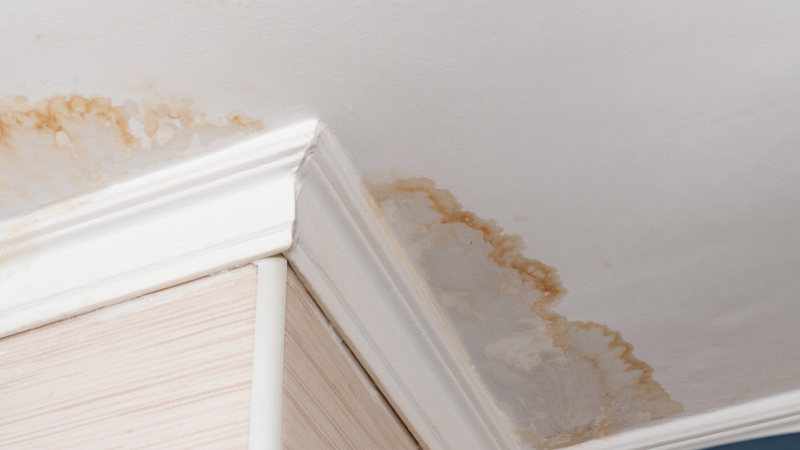Bathroom Water Damage - Ways To Prevent This Happening
Bathroom Water Damage - Ways To Prevent This Happening
Blog Article
Right here below you can get a bunch of first-rate data when it comes to Common Causes of Water Damage in a Bathroom.

The shower room is extremely susceptible for wet buildup and also possible water damage due to the constant use water in it. This article offers easy examination strategies to assist finding water damage hazards.
The constant use water in the restroom makes it extremely vulnerable for wet build-up and prospective water damages. By examining it consistently, you can reduce water relevant problems.
The adhering to collection of examinations is easy to do and need to be done when in every 3 months in order to keep your washroom in good shape and to avoid potential water damages triggered by the tub, the shower, pipeline joints and plumbing, sinks, cupboards, and also the toilet
Do not overlook doing these examinations and be comprehensive while doing them. Remember that these simple evaluations can save you a lot of money by giving early signs for water damages
Sinks as well as Cabinets
Sinks as well as cupboards are revealed to dampness and also moisture day-to-day and also are usually overlooked. Inspect regularly under the sink and on the countertop over it. Repair any drip in the catch as it might recommend drainpipe issues. Check out the sink, slow-moving draining pipelines might show a blocked drain. Replace sink seals if they are broken or loose.
Tub as well as Shower
The shower and also bath tub call for unique attention and maintenance. Check the ceramic tiles and replace if cracked. Make sure that there is no missing grout between the ceramic tiles. Check and also change fractured caulking at joints where the wall surfaces fulfill the flooring or the bath tub. Blocked drains pipes as well as pipes issues will avoid the tub from drying out and also might show significant troubles underneath the tub. Talk to an expert instantly to stop architectural damages. Focus on discolorations or soft areas around the bath tub wall surfaces as they might suggest an interior leak.
Plumbing
Signs for water damage are hard to identify considering that many pipes are mounted inside the wall surfaces.
Pay special attention to floor covering as well as walls dampness as well as stains as they might suggest an unnoticeable plumbing trouble. Inspect moisture degrees in adjacent spaces also.
The Commode
The bathroom is a susceptible water joint. Inspect the water lines and look for leaks around the commode seat, in the hose pipe, and under the water storage tank. If you spot any kind of indications of wetness on the flooring around the commode, look for leakages in the toilet rim and container seals.
Understand that hanging commode bowl antiperspirants enhances the opportunities for blockages.
Water Damage Signs In The Bathroom To Avoid Cleanup
Musty smell
This is one of the easiest signs to catch because musty smells are so odorous. The damp, earthy, moldy smell should be a big red flag. The smell will develop when moisture gets trapped in surfaces, and begins to facilitate mold growth. Leaking pipes under cabinets, inside walls, and behind shower fixtures will cause moisture to stay trapped and not dry, which will lead to mold growth and spread. As soon as you notice any musty smells in your bathroom, have it checked for hidden water damage and cleanup signs.
Visible mold
If the smell isn’t there to give it away, sometimes you will actually see mold growth. Finding mold in your bathroom is a serious problem, because mold is very harmful to your health. By the time mold growth is visible, it also means that water damage has already occurred and been present for some time. The only way the mold problem can be resolved is to find the source of the moisture and get it stopped. To safely and adequately remove mold, you need to have professionals handle the remediation. Do not waste any time in getting mold problems addressed, fixed, and sanitized so that you can protect you and your family from the many respiratory symptoms caused by mold exposure.
Damaged floors
Bathroom floors should be able to withstand some exposure to water while still remaining in good condition. However, when excess exposure or water leaks occur, they will begin to damage even the most water-resistant flooring. If you notice any cracking, bubbling, staining, or warping on your bathroom floors, there is probably a water leak somewhere causing the distortion. If you notice areas of the floor have become softer, or even have a spongy feeling, there is probably damage to the subfloor. Subflooring is typically made up of plywood. When plywood is exposed to water or moisture, it will absorb it. Once it has become saturated, the weight of the excess water will cause the wood to swell and soften. Check the floors in your bathroom frequently to catch any of these sings before they lead to damaged subflooring.
Changes on walls
When water leaks behind walls, it will cause changes in the drywall. Peeling plaster, blistering paint, and soggy wallpaper are all good indicators that excess water is building up behind the wall. Water leaking behind drywall will cause it to swell and be soft to the tough. If you start to notice gaps along the trim of your walls, or where tile meets the wall, it could also be a strong indicator that there is a leak behind the wall. Any changes, distortion, or damage on the walls should be evaluated as soon as you notice it to prevent further water damage and cleanup.

As a person who reads on Common Causes of Water Damage in a Bathroom, I was thinking sharing that editorial was sensible. Sharing is good. Helping others is fun. Thanks so much for going through it.
Show Details Report this page